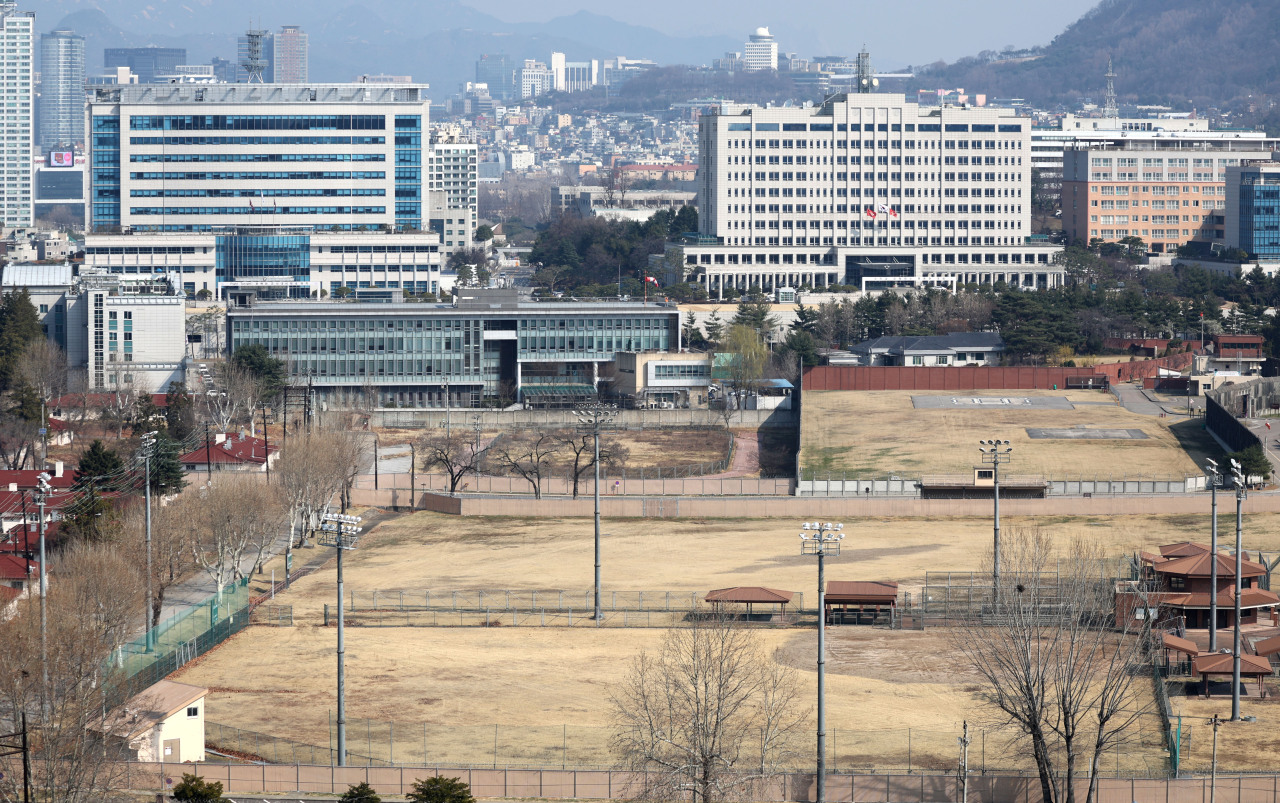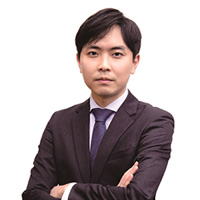Moon-Yoon feud casts doubt on Yongsan makeover plan
By Choi Si-youngPublished : March 22, 2022 - 17:51

The fate of Yongsan-gu, Seoul’s geographically central district set to see a changing landscape in years to come, is clouded again as the feud over whether to house a new presidential office there escalates between the outgoing and incoming presidents.
President-elect Yoon Suk-yeol is rushing to relocate the presidential office to the Defense Ministry complex in Yongsan before taking office on May 10. This is to end what he calls the “imperial presidency” Cheong Wa Dae represents, and to improve public access to the new office at the capital’s center.
But incumbent President Moon Jae-in, who himself abandoned a similar plan at the beginning of his term over logistical reasons, has said Yoon would create a security vacuum amid rising inter-Korean tensions. The relocation requires moving out the Defense Ministry and Joint Chiefs of Staff next to it.
Backing Moon, Yongsan Mayor Sung Jang-hyun referred to opportunities that the district residents would have to give up because of potential restrictions -- like height limits on apartments -- to accommodate security protocols involving the new president.
“After all these years, we’ve finally come to see light out of the box we’re in. The residents would be crushed if that chance gets taken away too,” Sung told reporters. Real estate developers are keen to capitalize lands vacated by the 28,500-strong US military moving out of Seoul in stages.
But the rules would be tightened again if his district were to host the top office, according to Sung, who complained of the “top-down decision” Sung described as contradicting Yoon’s pledge to expand public access to and communication with the country’s highest office.
“I was never asked for what I had to say about it,” Sung said, adding some residents, who were anxious about negative changes the relocation plan would bring about to their community, were demanding the mayor make sure the residents’ voices were heard clearly.
Yongsan residents, who in 2013 had to see one of biggest urban renewal plans taking place in the district sink on bankruptcy of the companies involved, threw their overwhelming support behind Oh Se-hoon last year, making him the Seoul mayor. Oh has promised to ease rules on urban renewal projects.
Meanwhile, Mayor Oh Se-hoon is seeking to press ahead with his pledge to reshape the city landscape with his initiative called “Plan for Seoul 2040,” where a remodeled Yongsan takes center stage alongside skyscrapers scattered around the capital.
“There won’t be any more regulations, none, to be placed over Yongsan, even if the presidential office is relocated there,” Oh said Monday, without elaborating. By law, the city would have to limit the height of buildings and put in a no-fly zone around the office.
A realtor who lives in the district and asked to identified by the surname Yang said the residents were divided but they agreed that a makeover of the district was long overdue. The change seems inevitable in one way or another, according to the realtor.
“I mean sooner or later the district will look different. It’s either a presidential Yongsan or greener Yongsan,” Yang said. The latter refers to the government’s long-term plan to build Yongsan Park by 2027 on lands the US military had used to station troops.
President-elect Yoon Suk-yeol is rushing to relocate the presidential office to the Defense Ministry complex in Yongsan before taking office on May 10. This is to end what he calls the “imperial presidency” Cheong Wa Dae represents, and to improve public access to the new office at the capital’s center.
But incumbent President Moon Jae-in, who himself abandoned a similar plan at the beginning of his term over logistical reasons, has said Yoon would create a security vacuum amid rising inter-Korean tensions. The relocation requires moving out the Defense Ministry and Joint Chiefs of Staff next to it.
Backing Moon, Yongsan Mayor Sung Jang-hyun referred to opportunities that the district residents would have to give up because of potential restrictions -- like height limits on apartments -- to accommodate security protocols involving the new president.
“After all these years, we’ve finally come to see light out of the box we’re in. The residents would be crushed if that chance gets taken away too,” Sung told reporters. Real estate developers are keen to capitalize lands vacated by the 28,500-strong US military moving out of Seoul in stages.
But the rules would be tightened again if his district were to host the top office, according to Sung, who complained of the “top-down decision” Sung described as contradicting Yoon’s pledge to expand public access to and communication with the country’s highest office.
“I was never asked for what I had to say about it,” Sung said, adding some residents, who were anxious about negative changes the relocation plan would bring about to their community, were demanding the mayor make sure the residents’ voices were heard clearly.
Yongsan residents, who in 2013 had to see one of biggest urban renewal plans taking place in the district sink on bankruptcy of the companies involved, threw their overwhelming support behind Oh Se-hoon last year, making him the Seoul mayor. Oh has promised to ease rules on urban renewal projects.
Meanwhile, Mayor Oh Se-hoon is seeking to press ahead with his pledge to reshape the city landscape with his initiative called “Plan for Seoul 2040,” where a remodeled Yongsan takes center stage alongside skyscrapers scattered around the capital.
“There won’t be any more regulations, none, to be placed over Yongsan, even if the presidential office is relocated there,” Oh said Monday, without elaborating. By law, the city would have to limit the height of buildings and put in a no-fly zone around the office.
A realtor who lives in the district and asked to identified by the surname Yang said the residents were divided but they agreed that a makeover of the district was long overdue. The change seems inevitable in one way or another, according to the realtor.
“I mean sooner or later the district will look different. It’s either a presidential Yongsan or greener Yongsan,” Yang said. The latter refers to the government’s long-term plan to build Yongsan Park by 2027 on lands the US military had used to station troops.



![[Herald Interview] 'Amid aging population, Korea to invite more young professionals from overseas'](http://res.heraldm.com/phpwas/restmb_idxmake.php?idx=644&simg=/content/image/2024/04/24/20240424050844_0.jpg&u=20240424200058)













![[KH Explains] Korean shipbuilding stocks rally: Real growth or bubble?](http://res.heraldm.com/phpwas/restmb_idxmake.php?idx=652&simg=/content/image/2024/04/25/20240425050656_0.jpg&u=)

